Product intro
Although it’s called the Arbiter 2, this is the third RTA in the Arbiter series from OXVA. We had the original Arbiter in late 2020, which was designed by Justin Lai, then the Arbiter Solo designed by Tony T… and now the Arbiter 2, again designed by Justin Lai.
At 24.5 mm at the base (26 at the main body,) the Arbiter 2 is a somewhat condensed version of the original Arbiter. It comes with a bubble glass that holds 5 mL of e-liquid and a straight glass that holds 3.5 mL and has a postless-style build deck that can accommodate both single and dual coil builds. It uses what they’re calling T2B fanned airflow, which is top-to-bottom airflow that is directed to the coils through a pyramid-shaped array of both honeycomb and slit-style holes on the deck. This allows most of the air to hit the center of the coils.
Many people—myself included—thought the original Arbiter was a great RTA. So why release another one so soon? There’s a reason for that, so keep reading to find out.
Build quality and design
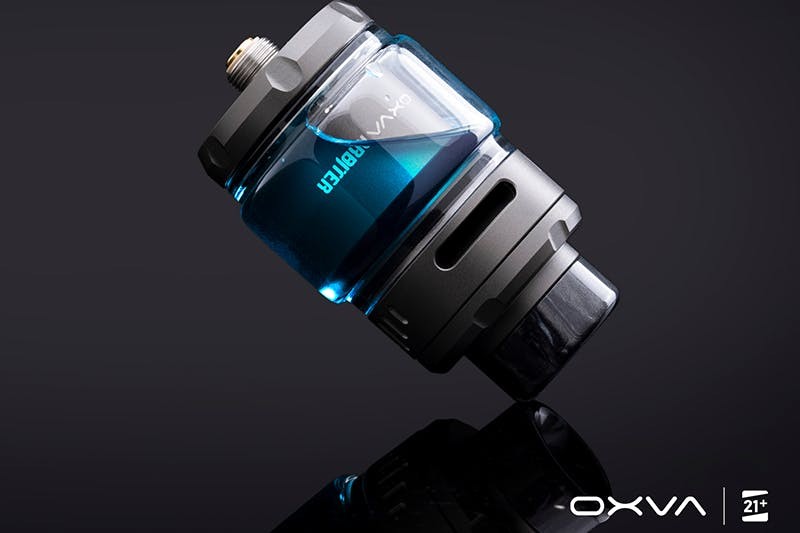
Right out of the box, I noticed that the Arbiter 2 RTA appears a bit sleeker than the original. Not just because of the size but because the edge of the top cap is beveled, whereas on the original the edge is kind of protruding. It is machined and constructed well, but there was a faint smell of machine oil on the deck so I would recommend a good cleaning before using it.
I received the stainless steel and golden versions, and the finishes are flawless. It currently comes in five different colors and has an 810 resin drip tip with a 510 drip tip adapter. There is matching knurling on the top cap and base, some familiar branding on the chimney, and interestingly enough, a pyramid-shaped design engraved on each side of the AFC ring that matches the design of the airflow holes on the deck.
The RTA measures 24.5 mm in diameter at the base and the body is 26 mm. It is 52 mm tall counting the 510 and the drip tip (which is 2 mm shorter than the original). It turns out Justin Lai got a lot of requests to design a smaller version to make it compatible with more vape mods on the market, and so he did. Top airflow is provided by two slots that direct the air down and to the sides of the coils through both honeycomb and slit-style style air holes. There is a pyramid-shaped array of holes on each side with the larger holes in the middle to allow more air to hit the center of the coils, while additional holes below allow for under-coil airflow.

The original Arbiter has a truss bridge style piece that fits over the deck like you’d see in a Boro tank for a Billet box, but the Arbiter 2 has a fixed air sleeve that is press-fitted into the chimney. And therein lies the first and biggest con I have with the RTA.
At first, I thought the threads were bad when I tried to screw the tank together. It would thread fine for a couple of turns, and then get tight. I tried lubing them up with some liquid but still had the same issue. So I tried spinning the air sleeve within the chimney and that’s where the problem was. It’s supposed to spin freely, but after a few turns, it starts to get tight—which makes no sense since it’s not a threaded piece. I tried lubing it as well but had no luck. The gold version did the same thing, so whether they all do it or not I don’t know. It’s not a huge deal considering the performance of the RTA, but I’ll be honest, I like the truss bridge style of the original better.
The Arbiter 2 comes with a straight glass that holds 3.5 mL of liquid, and a bubble tank that holds 5 mL. The tank is smaller than the original, and you’ll probably have to use the straight glass when using it on one of those side-by-side mods that have the battery tube next to the tank. The tank can be filled through two 8 mm x 3 mm kidney-shaped ports beneath a threaded fill cap that opens after little more than a quarter of a turn.
Build deck and wicking
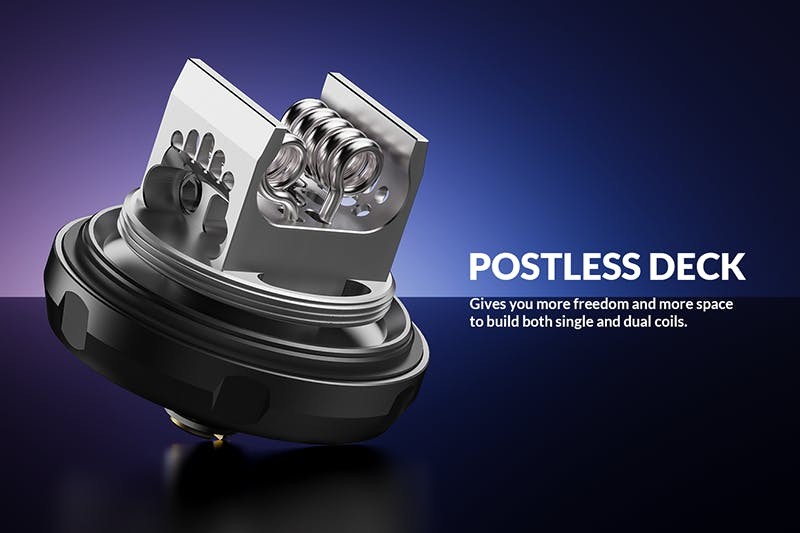
The Arbiter 2 RTA has a post-less style build deck with hex head grub screws at the sides. The screws are incredibly small, and because they are hex heads, there is always the possibility of stripping. You can’t see the grub screws from above while tightening or loosening them, so you also have to be careful you don’t back them out too much or they’ll fall out. The deck accommodates dual or single-coil builds, but you probably won’t get any larger than 3 mm coils for dual builds, even though the website boasts a spacious build deck.
As far as wicking, it’s pretty straightforward as far as RTAs go, but the wicking holes are somewhat small so not much cotton is needed.
Wicking with the included 3 mm shoelace cotton was relatively simple. If you’ve wicked an RTA before then you’ll have no trouble as there are no surprises here. The wicking holes are 8 mm by just under 3 mm, which are a little small in my opinion. When using 3 mm coils you will have to comb out the ends of the cotton a good bit if you don’t want dry hits. With 2.5 mm coils, however, I didn’t have to comb out that much for it to wick well.
As I mentioned earlier, I didn’t try a single coil but I’m sure the wicking holes will work great for single builds. It looks like a 4 mm coil would be perfect.
Airflow
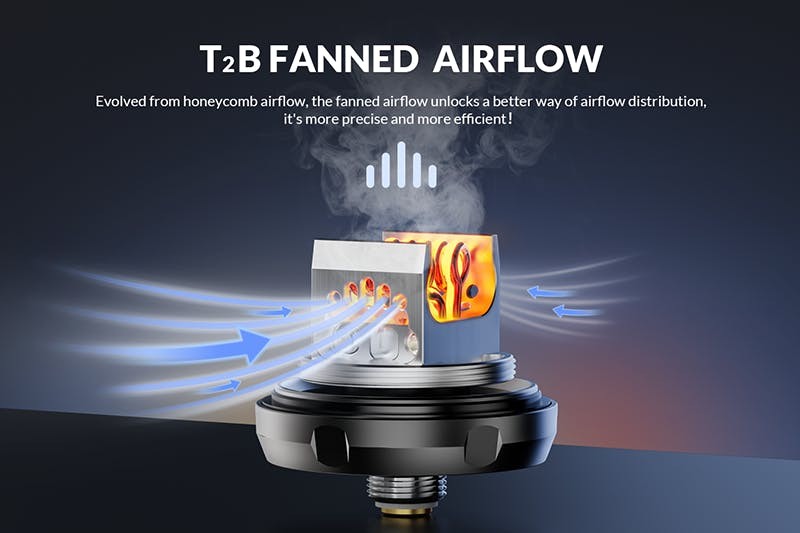
The Arbiter 2 RTA has top airflow provided by two cyclops style holes that are 13 mm x 2 mm and are adjustable. They direct the air down to a pyramid-shaped array of honeycomb and slit-style airflow holes on each side of the deck.
The pyramid-shaped section of holes just happens to be the same shape as the design engraved on the outside of the atomizer on the AFC ring. Five holes make up the pyramid starting with a 1 mm round hole that steps up to a 1 mm x 1.5 mm vertical slit, then steps up to a 1 mm x 2 mm vertical slit in the middle, and then steps back down respectively.
The larger holes in the middle allow more air to hit the center of the coil, which is the idea behind the “fanned airflow”. There is another row of holes below angled upward for bottom-side airflow. That row consists of a 1 mm x 4 mm slit in the middle with a 1 mm round hole on each end. Finally, below that is a 1 mm x 2 mm hole in the deck that hits the bottom of the coil. And, of course, this array of holes is the same on each side.
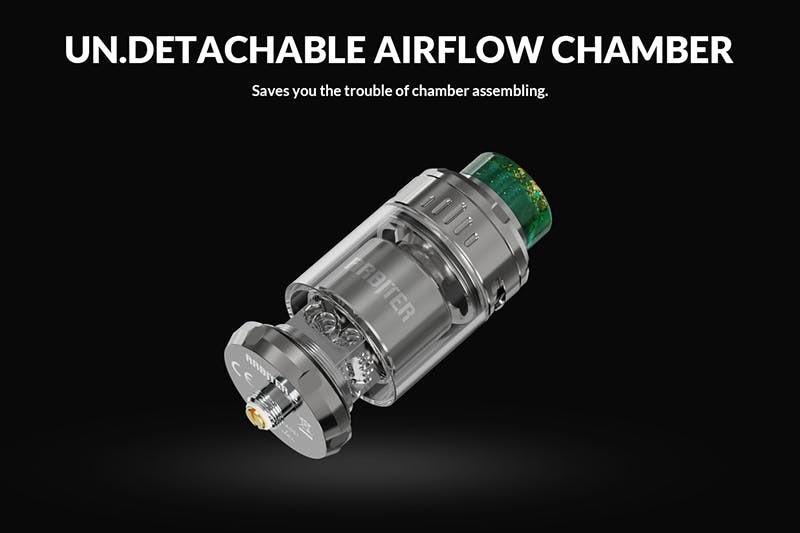
The airflow is really smooth and fairly wide open. It’s just slightly more restricted than the original, but not by much. Running it wide open gives me the perfect amount of airflow, but that’s me, and your experience may be different. When running it wide open, if you draw on it slowly there’s a faint hint of a whistle, but I doubt anyone’s going to draw on it that slowly under normal use.
To adjust the airflow, simply turn the AFC ring. It turns smoothly without being too loose or too tight and has a stopper at fully open or fully closed. Note that the AFC ring is not removable. OXVA is listing this as a feature, but it would have been nice if it would come off to allow for some deeper cleaning—but that’s not a dealbreaker by any means.
Arbiter 2 performance
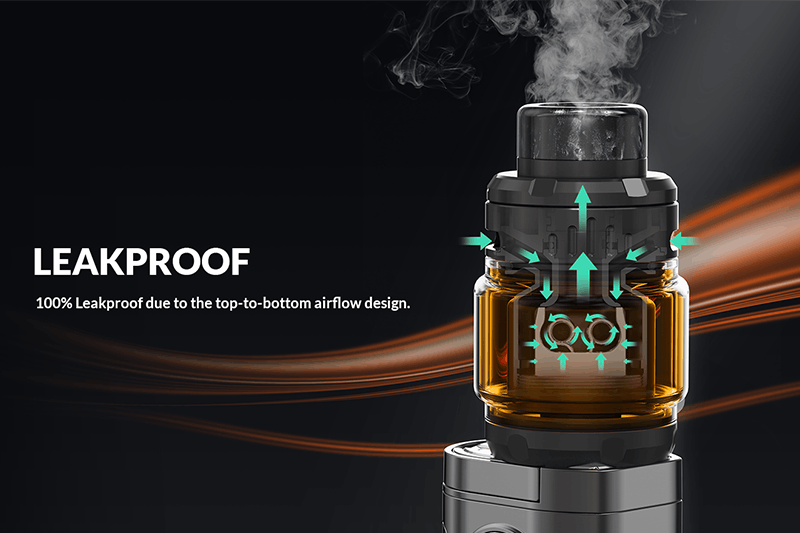
The Arbiter 2 RTA is a good performer in my opinion. I felt that way about the original, so I wasn’t sure what to think going into this. It’s always disappointing when the sequel isn’t as good as the original, but this is not the case here. When it comes to flavor, I think the Arbiter 2 is better.
To make sure I wasn’t just imagining it, I did a back-to-back comparison of both RTAs using the same coils, the same cotton, and the same e-liquid. I used premade 2.5 mm Coilology Ni80 tri-core fused Claptons and Cotton Bacon Prime, and for e-liquid, I went with one of my old school favorites, Milk By The Pound.
Since the original has a little more airflow, I cut it back about a quarter of the way to where I felt they were equal. The builds came to 0.14 ohm on each and I set them at 53 watts, which seemed to be the sweet spot for both of them. I used 2.5 mm coils because of the deck space on the Arbiter 2.
Both RTAs performed great, producing lots of clouds and flavor, but I could tell that I was getting better flavor from the Arbiter 2. Whether it’s the fanned airflow or the fact that the RTA is shorter and therefore vapor has less distance to travel to your lips, (or a combination of both,) the Arbiter 2 won in the flavor department. I’m not saying it’s the best flavor of any RTA—that is subjective and relies upon many variables—but it’s RDA-caliber flavor on an RTA.
Pros / Cons
+ Good build quality
+ 5 mL capacity bubble tank
+ Well designed and smooth airflow
+ No leaking
+ Great flavor
+ Nice resin drip tip
+ 510 drip tip adapter included
+ Coils and cotton included
+ Coil specs indicated
- Difficult to thread together
- Slightly limited deck space
- Post holes are small
- Small juice flow holes for 3 mm coils
- No coil cutting guide

Verdict
The Arbiter 2 RTA is a good performer with good flavor. My biggest con is the fixed air sleeve inside the chimney that’s supposed to spin freely but gets stuck after a couple of turns, making it seem like the threads are bad even though they’re not. The tank still screws together, but it just feels a little wonky. It’s the same on both samples I received so I had to mention it.
Aside from that, I believe it’s better than the original when it comes to flavor. So, if that’s what you’re looking for, or if you like the original but want something that will fit a variety of mods without any overhang, then this RTA just might be for you.
Recommended.
Source: https://vaping360.com/













































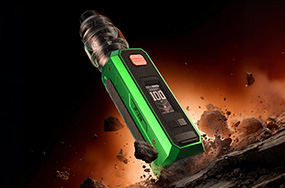






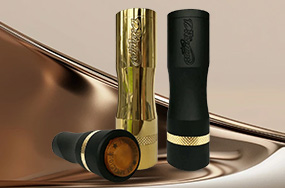

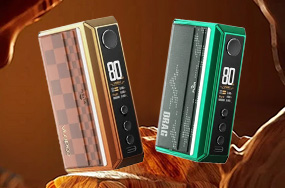


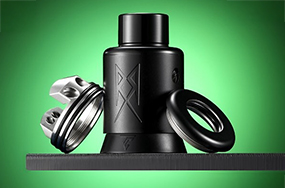
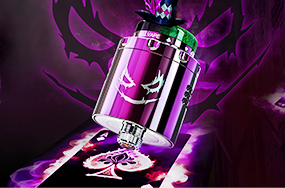
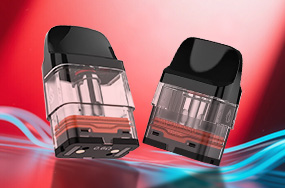







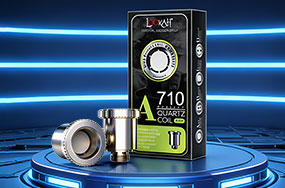
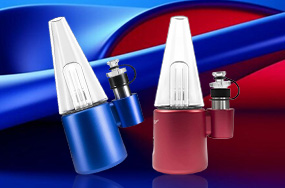






comments